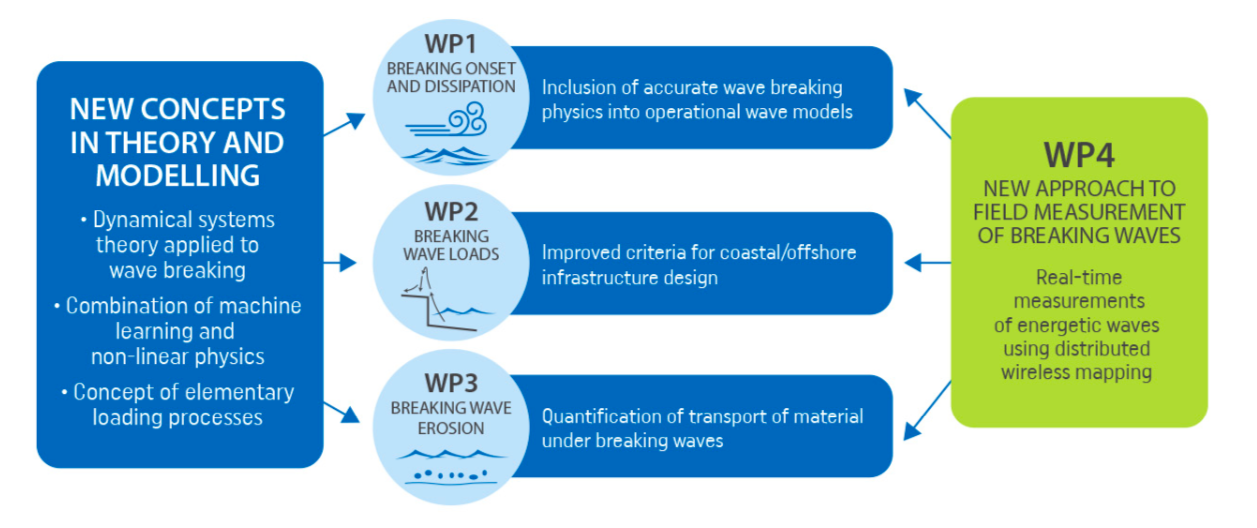Host: University College Dublin
Supervision: Professor Frédéric Dias
Summary: Development of a new mathematical wave model including unbroken as well as broken wave.
HIGHWAVE covers simultaneously past, present and future energetic ocean waves. The project research, associated with sustainable environmental science and technology, will help future generations to improve environmental practice. HIGHWAVE is a cutting-edge mathematical project that uses real-time raw data harvested in situ by the project team to develop new models and new algorithms. These new models will provide information about air and water exchange in oceanic environments, boulder deposits, erosion and structural damage.
The PhD student will be based in the School of Mathematical Sciences of University College Dublin. The wave group (5 PhD students, 3 postdocs, 1 lecturer, 1 engineer) has an international reputation in the study of waves and computational fluid mechanics.
The work packages (WPs) of the project are summarized below:

The present PhD deals with WP1. The work will be performed by a PhD student and a postdoc working closely together.
The key development of WP1 is a new mathematical wave model including unbroken as well as broken waves. The model will be a system of coupled amplitude equations, one for the (unbroken) wave amplitude and one for the order parameter associated with the breaking threshold parameter. The model will be fed by several ingredients: (i) a breaking onset threshold that is robust to the range of mechanisms that contribute to wave breaking: bathymetry, spectral bandwidth, directionality, wind forcing, currents and any combination of these; (ii) a breaking strength parameter linked to the breaking threshold parameter; (iii) a source term representing wind forcing. The coupled model will be tested first in deep to intermediate water, since a breaking threshold parameter and a breaking severity parameter have already been identified for this simplified case. Even if the preparation of the ingredients makes partial use of previous theories and measurements, it will rely primarily on the new field measurements that are part of HIGHWAVE’s WP4.
The key goals, together with the proposed methodology, include:
- Universal threshold for wave breaking onset that is robust to the range of mechanisms that contribute to wave breaking (the approach here is to combine Machine Learning classification algorithms with numerical simulations based on the full water wave equations to find the breaking onset threshold)
- Prediction of breaking strength across the whole range of wave breaking mechanisms (the approach here is to combine Machine Learning tools with field measurements to find the link between breaking strength and breaking threshold parameters)
- Incorporation of wave directionality into large-eddy-simulations of the oceanic boundary layer with stochastic breakers (an improved description of breaking statistics as a function of wind speed, wave age, and wave direction will be obtained from the analysis of field data)
The expected duration of the PhD is 4 years.
To find out more please visit UCD website











